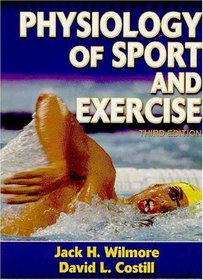Search -
Physiology of Sport and Exercise
Physiology of Sport and Exercise
Author:
How can you make the best textbook in the field of sport and exercise physiology better? Leave it to authors Jack Wilmore and David Costill, two of the field’s most respected scholars, to do so. The thoroughly revised second edition of Physiology of Sport and Exercise redefines the discipline’s standard for textbooks. Improved feature... more »
Author:
How can you make the best textbook in the field of sport and exercise physiology better? Leave it to authors Jack Wilmore and David Costill, two of the field’s most respected scholars, to do so. The thoroughly revised second edition of Physiology of Sport and Exercise redefines the discipline’s standard for textbooks. Improved feature... more »
ISBN-13: 9780736044899
ISBN-10: 0736044892
Publication Date: 1/2004
Pages: 726
Rating: 2
ISBN-10: 0736044892
Publication Date: 1/2004
Pages: 726
Rating: 2
5 stars, based on 2 ratings
Publisher: Human Kinetics Publishers
Book Type: Hardcover
Members Wishing: 0
Reviews: Amazon | Write a Review
Book Type: Hardcover
Members Wishing: 0
Reviews: Amazon | Write a Review
Genres:
- Sports & Outdoors >> Miscellaneous >> Reference
- Medicine >> Basic Science >> Pathophysiology
- Medicine >> Basic Science >> Physiology
- Medicine >> Specialties >> Sports Medicine
- Medical Books >> Basic Sciences >> Pathophysiology
- Medical Books >> Basic Sciences >> Physiology




